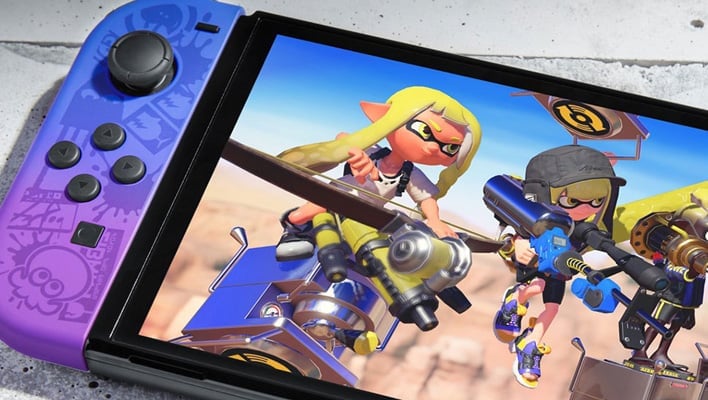
Nintendo has a little under three months to officially reveal the successor to the Nintendo Switch, but the company has been almost completely mum to date besides acknowledging that it will play your current Switch games. Fortunately, we have numerous leaks that paint a pretty vivid picture of what the machine will be like. Among those leaks have been confirmation that it will use an updated NVIDIA SoC, so DLSS upscaling is a given, right?
Seems like not, actually. You see, Japanese companies—particularly tech companies, like Nintendo and Sony—have a very serious case of “not invented here” syndrome. Furthermore, NVIDIA is known for its cutthroat business practices. Put two and two together, and that explains why we have a new Nintendo patent, published December 31st, for “Systems and Methods For Machine Learned Image Conversion.”

The patent lists three fellows from Nintendo’s European Resesarch & Development group, affectionately known as NERD, as the inventors. It goes on to clearly describe a real-time graphics upscaler much like NVIDIA’s DLSS or AMD’s FSR. Specifically, it talks about breaking up an image into a group of tiles, which are then processed by an AI with the help of “additional context data,” likely referring to motion vectors and possibly other temporal data.
This is, put simply, exactly how DLSS works. It doesn’t make any sense that Nintendo would patent DLSS, though, and it’s likely that NVIDIA would want per-unit royalties and perhaps ongoing support fees if Nintendo were to license DLSS from the chipmaker. Instead, the only assumption we can make is that Nintendo has elected to develop its own AI upscaler.

Supporting this idea is that the patent includes considerable discussion of how to train a convolutional neural network specifically for the purpose of upscaling game images. There would be no need to train a network if the technology were being licensed from someone else, so yeah.
DLSS itself is optimized primarily for the large discrete GPUs that NVIDIA makes. It does have a performance cost that scales with output resolution, and it could be quite heavy for a dinky little GPU like the one in the Switch 2. Given that the Switch 2 will always have a fixed screen size, the model can make a lot more assumptions about both input and output that could make it better and more performant than DLSS.

Indeed, the patent document (which you can find at USPTO) seems to exclusively address the case of upscaling from 960×540 (or “540p”) to 1920×1080 (“1080p”, or Full HD). This could mean that the Switch 2’s screen is a full 1080p resolution (an upgrade from the 720p screen of the Switch), or it could be a red herring. It’s interesting to see such a specific use case targeted this way, though.